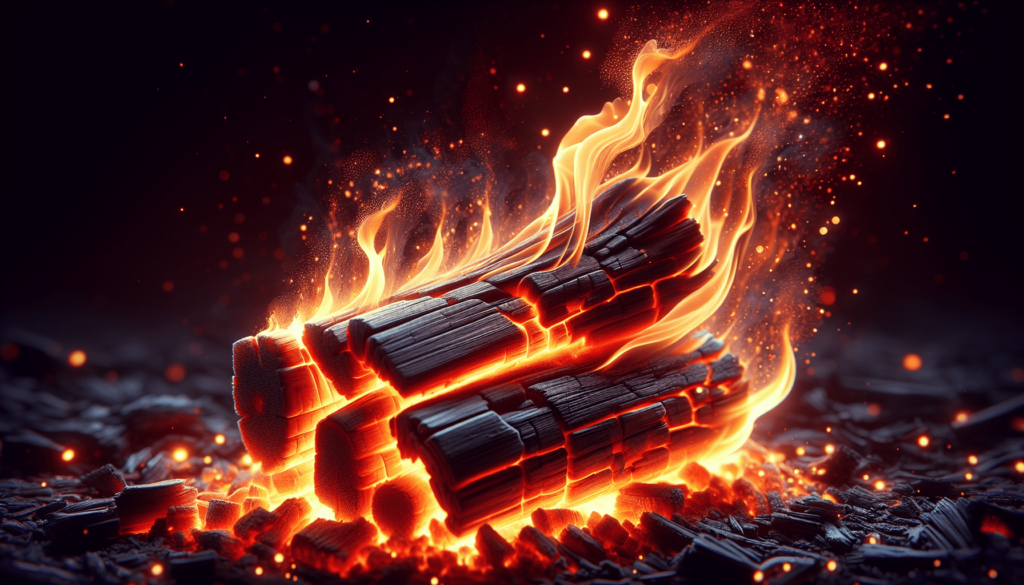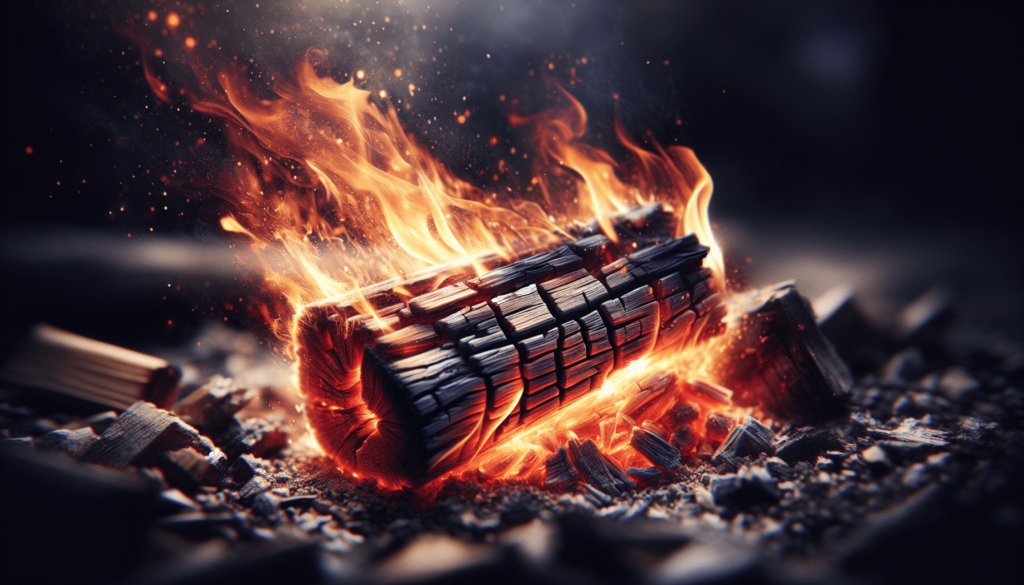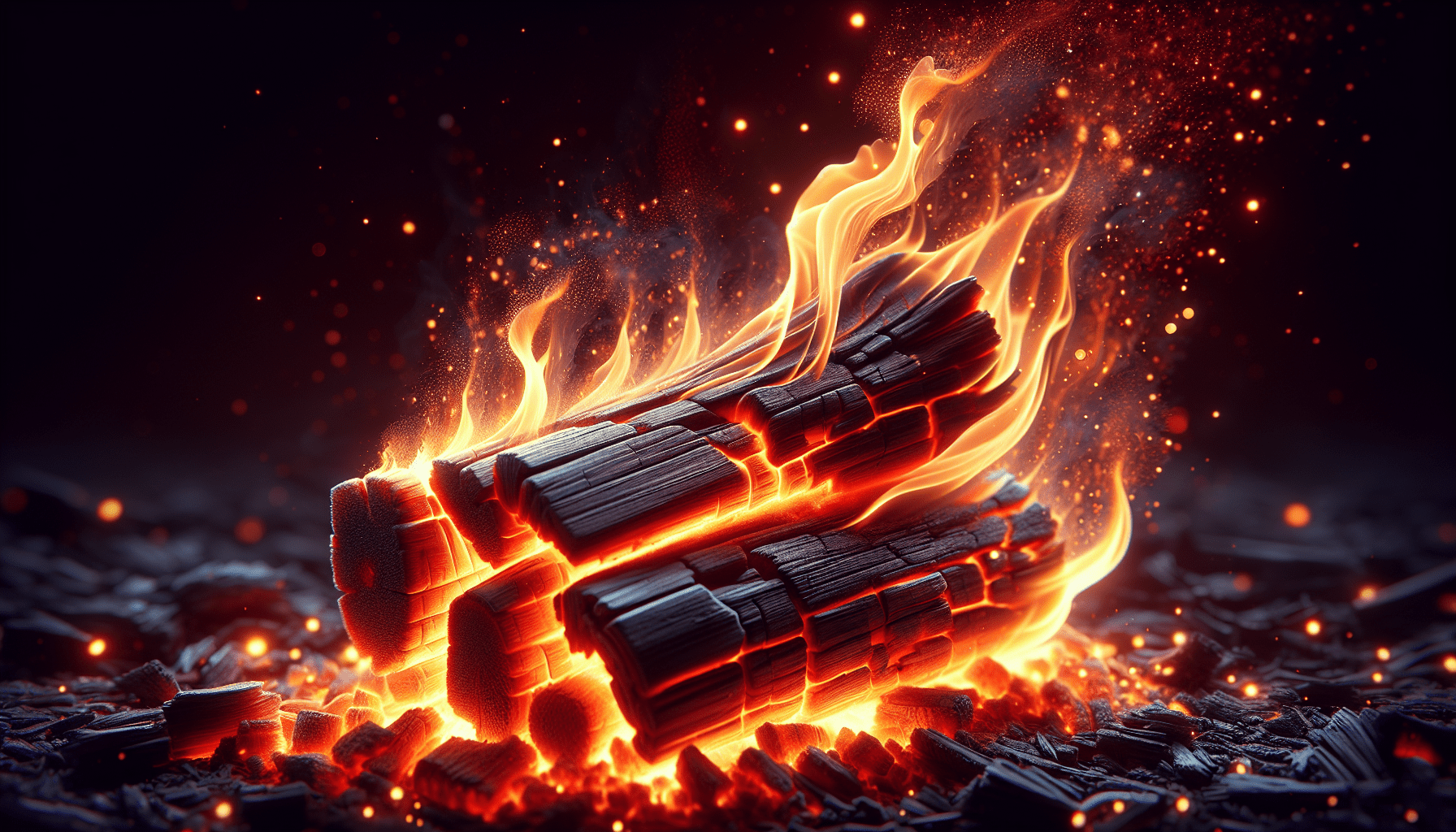When wood burns, the burning process is called combustion. When I first got curious about what actually happens when wood turns into those glowing embers and eventually ashes, I found out it’s more than just setting a log on fire. Combustion is this amazing chemical reaction where the wood’s organic materials react with oxygen, producing heat, light, and various gases. It’s fascinating how something as simple as a campfire or a fireplace blaze is rooted in such a complex interplay of nature’s elements. Have you ever found yourself by a roaring campfire, mesmerized by the dancing flames, and wondered about the science behind it all? I certainly have. There’s something almost hypnotic about watching wood burn, seeing it transform into embers, and feeling the warmth emanate into the cool night air. But what exactly is this burning process called?
The Science of Burning Wood
Before we dive into the technical terminology, let’s break down the process in simpler terms. When you light a piece of wood on fire, it undergoes a series of complex chemical reactions. What you see—the flames, the smoke, the glowing coals—is the result of these reactions.
Combustion: The Technical Term
So, let’s get to the heart of the matter. When wood burns, the burning process is called combustion. This might sound like a fancy scientific word, but understanding what it means isn’t too complicated. Combustion is essentially a high-temperature exothermic reaction between a fuel (in this case, wood) and an oxidant (usually oxygen from the air).
Exothermic Reaction: What Does it Mean?
Okay, another term—exothermic reaction. “Exothermic” just means that this process releases heat. Think of it this way: the wood stores energy in its bonds, and when these bonds break during combustion, that energy is released in the form of heat and light.
Breaking Down Combustion
Now that we know the burning process is called combustion, let’s break it down even further. Combustion actually occurs in several stages, which can be fascinating to learn about.
Stage 1: Drying
Initially, when you light a piece of wood, the heat first drives off any moisture contained within it. Even seasoned wood can have a small percentage of water. If you’ve ever tried to burn green wood, you know it doesn’t work well because it has too much water.
Stage 2: Pyrolysis
Once the wood is dry, it undergoes pyrolysis. This is a thermal decomposition process that occurs at temperatures above 300°F (about 150°C). Simply put, pyrolysis breaks down the wood’s complex organic molecules into simpler gases, liquids, and solid residues (charcoal). If you’re seeing smoke, that’s usually a mixture of gases and volatile compounds that result from pyrolysis.
Stage 3: Flaming Combustion
This is the stage we’re most familiar with—the flames! The gases released during pyrolysis mix with oxygen in the air and ignite, producing flames. This process releases a lot of energy, hence the intense heat and light.
Stage 4: Char Combustion
Even after the flames die down, the combustion process continues. The remaining solid residue—char—burns slowly at lower temperatures, producing glowing embers. This stage can last quite a while and provides a sustained heat output.

Chemical Reactions in Combustion
For those who love diving into details, let’s talk a bit about the chemical reactions involved in wood combustion.
Basic Chemical Equation
The simplified chemical equation for the combustion of wood can look something like this:
[ \textO_5} + 6 \text \rightarrow 6 \text + 5 \text ]
In this equation, (\textO_5}) represents cellulose, a major component of wood. This reacts with oxygen ((\text)) to produce carbon dioxide ((\text)) and water ((\text)).
Real-World Complexity
Of course, the real world isn’t as straightforward. Wood is composed of various complex organic molecules like cellulose, hemicellulose, lignin, and other minor components. When these substances break down, they produce a variety of gases, including not just carbon dioxide and water, but also carbon monoxide (CO), methane (CH_4), and other volatile organic compounds (VOCs).
The Role of Oxygen
I’ve mentioned oxygen multiple times because it’s crucial for combustion. If you’ve ever tried to start a fire only to have it sputter out, you know how important it is to get the right air circulation.
Aerobic vs. Anaerobic Combustion
Combustion can be classified into two types: aerobic and anaerobic. Aerobic combustion involves plenty of oxygen and is what we usually see in a campfire or fireplace. Anaerobic combustion occurs with limited oxygen and results in less complete combustion, producing more smoke and carbon monoxide.
Oxygen’s Double Role
Oxygen serves two critical roles in combustion. First, it’s a reactant in the chemical reactions, helping break down the organic molecules in wood. Second, it helps sustain the flame by providing the necessary conditions for the gases produced during pyrolysis to ignite.

The Importance of Temperature
Temperature plays a big role in how efficiently wood burns. Different components of wood ignite and burn at different temperatures.
Ignition Temperature
The ignition temperature is the minimum temperature at which the wood will start to burn. For most types of wood, this is around 300°C (572°F).
Sustained Combustion Temperature
However, to keep the fire going, you need a higher sustained temperature. Typically, a wood fire burns efficiently at around 600–800°C (1112–1472°F).
Too Hot?
You might wonder if there’s such a thing as too hot when it comes to burning wood. The answer is yes. Extremely high temperatures can vaporize the wood too quickly, leading to incomplete combustion and more smoke.
By-products of Combustion
When wood burns, it produces a variety of by-products. Some are harmless, while others can be a bit concerning.
Common By-products
Here’s a table summarizing the common by-products:
| By-product | Description |
|---|---|
| Carbon Dioxide | A primary product of complete combustion |
| Water Vapor | Another primary product; you see it as steam |
| Carbon Monoxide | A toxic gas resulting from incomplete combustion |
| Ash | Inorganic residue left after all combustible elements are burnt |
| Volatile Organic Compounds (VOCs) | Organic chemicals that have high vapor pressure at room temperature |
| Particulates | Tiny solid or liquid particles suspended in the air, often seen as smoke |
Health Implications
Some of these by-products, like carbon monoxide and certain VOCs, can be harmful. It’s why proper ventilation is crucial if you’re using a wood-burning stove indoors.
Environmental Impact
Burning wood also impacts the environment. Carbon dioxide is a greenhouse gas, contributing to climate change. Particulates and VOCs can affect air quality and human health.
Types of Wood and Their Burning Characteristics
Not all wood is created equal when it comes to burning. Different wood types can have varied burning characteristics.
Hardwood vs. Softwood
A common distinction is between hardwoods and softwoods.
| Wood Type | Characteristics | Examples |
|---|---|---|
| Hardwoods | Dense, burns slowly, produces more heat, less smoke | Oak, Maple, Birch |
| Softwoods | Less dense, burns faster, produces more smoke and resin | Pine, Fir, Spruce |
Seasoned vs. Green Wood
Seasoned wood has been dried out, while green wood is freshly cut and contains a lot of moisture.
| Wood Type | Moisture Content | Characteristics |
|---|---|---|
| Seasoned Wood | Low | Burns efficiently, less smoke |
| Green Wood | High | Hard to ignite, more smoke, less heat |
Practical Tips for Efficient Wood Burning
Now that we’ve tackled the science, let’s get practical. How can you make sure you’re burning wood efficiently?
Choosing the Right Wood
Opt for seasoned hardwoods if possible. They burn slower, produce more heat, and less smoke than softwoods or green wood.
Ensuring Proper Air Flow
Good airflow ensures that your fire has enough oxygen to sustain combustion. You can achieve this by not overloading your fireplace or wood stove and by using a chimney or flue to maintain a good draft.
Optimal Arrangement
How you arrange your wood can also make a difference. Start with kindling to get the fire going, then add larger logs once you have a good base of hot coals.
Regular Maintenance
Regularly clean out ash and soot from your firebox, chimney, and flue. Accumulations can restrict air flow and make your fire less efficient.
Avoid Burning Treated Wood
Never burn wood that has been painted or chemically treated, as it can release toxic fumes.
Advanced Topics
For those who want to go even deeper, there are a few advanced topics worth exploring.
Catalytic Combustors
Some modern wood stoves come equipped with catalytic combustors, which help burn off gases and particulates, making the fire more efficient and environmentally friendly.
Secondary Combustion
Some advanced stoves use a secondary combustion chamber to burn off gases that didn’t combust in the primary chamber, increasing efficiency and reducing emissions.
Gasification
Gasification is a very advanced method where wood is converted into combustible gases at high temperatures. These gases can then be used to fuel internal combustion engines or produce electricity.
Fun Facts About Wood Burning
Let’s end on a lighter note with some fun facts about wood burning.
Pyromaniacs Rejoice
The word “pyrolysis,” which we talked about earlier, comes from the Greek words “pyro” (fire) and “lysis” (breaking down). So, pyrolysis literally means “breaking down with fire.”
Different Flame Colors
Did you know that the color of the flames can tell you a lot about the fire? Blue flames indicate a hotter, more complete combustion, while yellow and orange flames usually show cooler, less complete combustion.
Ancient Practice
Humans have been using fire to burn wood for thousands of years. It’s thought that controlled use of fire dates back to Homo erectus, nearly a million years ago.
Space Fire
Believe it or not, NASA has been studying combustion in microgravity. That’s right, they’re setting fires in space to understand how flames behave in zero gravity.
Conclusion
So, when wood burns, the burning process is called combustion. It’s a complex interplay of chemical reactions, temperatures, and various factors that transform simple logs into heat, light, and a few by-products. Whether you’re by a campfire or using a wood stove, knowing a bit about what’s happening can make the experience even more fascinating. And who knows, the next time someone asks, “When wood burns, the burning process is called?” you might just have the perfect answer.

